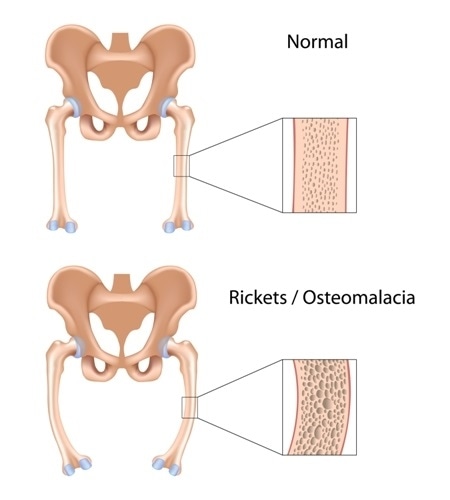Rickets is a disease of the growing bones among children that is caused due to deficiency of Vitamin D mainly due to lack of sunlight exposure. It was most commonly seen during the Victorian era due to smog and lack of exposure to sunlight among the children in the cities.
New archaeological evidence has shown that Roman children were also not exempt from this crippling bone deformity. Experts have said that at least one in 20 Romans could be suffering from rickets. The numbers were higher at one in ten among those who lived in the British Isles.
Scientists from Historic England and McAster University in Canada have uncovered evidence that Roman children did not get adequate sunlight exposure. This led to vitamin D deficiency in them and eventually rickets. Rickets was considered to be most prevalent in Britain than anywhere else in the Roman Empire. In the smoggy 19th Century Britain, the industrial towns in Victorian Britain caused rickets in thousands of children. This new finding shows that rickets was prevalent in the Roman Empire nearly 2000 years before that.

Rickets. Image Credit: Alila Medical Media / Shutterstock
The team had embarked upon a three year project examining roman skeletons they had obtained from northern England to southern Spain. In total they looked at 2,787 skeletons from 18 cemeteries across the Roman Empire. They noted that these bones tended to have rickets like deformities in them. According to Simon Mays, a human skeletal biologist at Historic England, rickets seemed to be “far from being a new problem”. The study was published in the American Journal of Physical Anthropology.
They also noted that the problem of Vitamin D deficiency among Romans was not as bad as that seen in Victorian times. The problem was in seen among one in 20 children and most commonly seen among infants. In the English cementaries, one in 10 children seemed to have bone deformities that looked like rickets. One of the reasons for prevalence of rickets could be keeping babies and children indoors out of sunlight to protect them from the cold. Pregnant mothers who were vitamin D deficient and not exposed to the sunlight passed on their deficiency to their babies. Mayes said, “Being indoors away from sunshine was probably a key factor. Infant care practices that were innocuous in a Mediterranean climate may have been enough to tip babies into vitamin D deficiency under cloudy northern skies.”
Researchers noted that Roman towns were smaller and had less pollution so the prevalence of rickets was lower than in the Victorian England. At a cemetery near Ostia, Italy there seemed to be more number of cases than anywhere else. Ostia was a port town and had a dense population. People there lived in multi-storey apartment buildings. Megan Brickley of McMaster University, the principal investigator on the project, explained that people living in apartments with small windows also lived in closely spaced areas with narrow streets. This meant they had low exposure to sunlight and were thus deficient in Vitamin D.
As food started becoming fortified with vitamin D, rickets started slowly disappearing during the early 20th century. Awareness also raised the exposure to sunlight among children. In recent years however, there is a surge of vitamin D deficiency among adults and children in UK.
Rickets typically causes bone deformities such as bowed legs, stunted growth and deformed arms. These bones are more likely to be fractured at minor impacts.